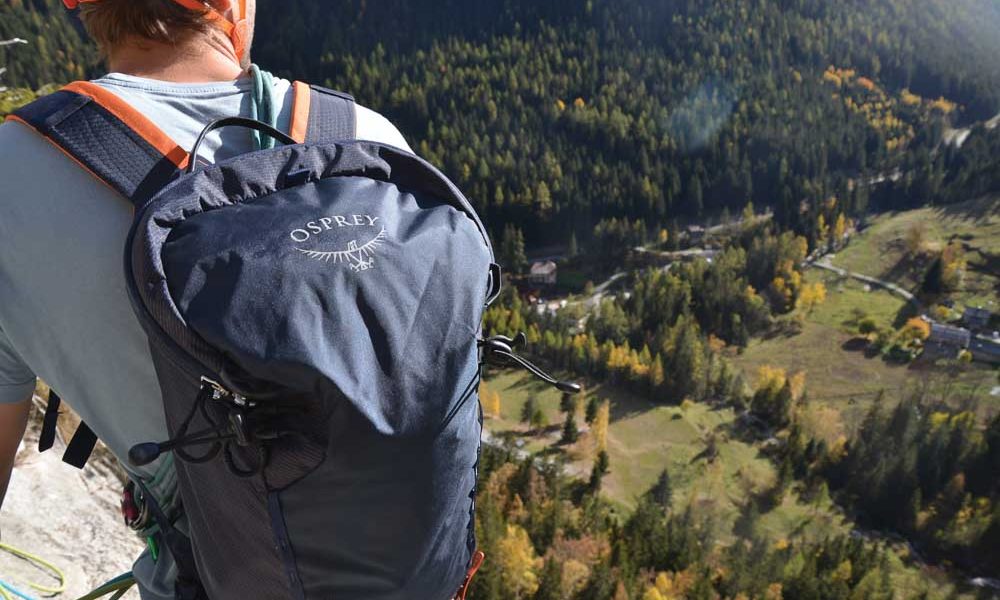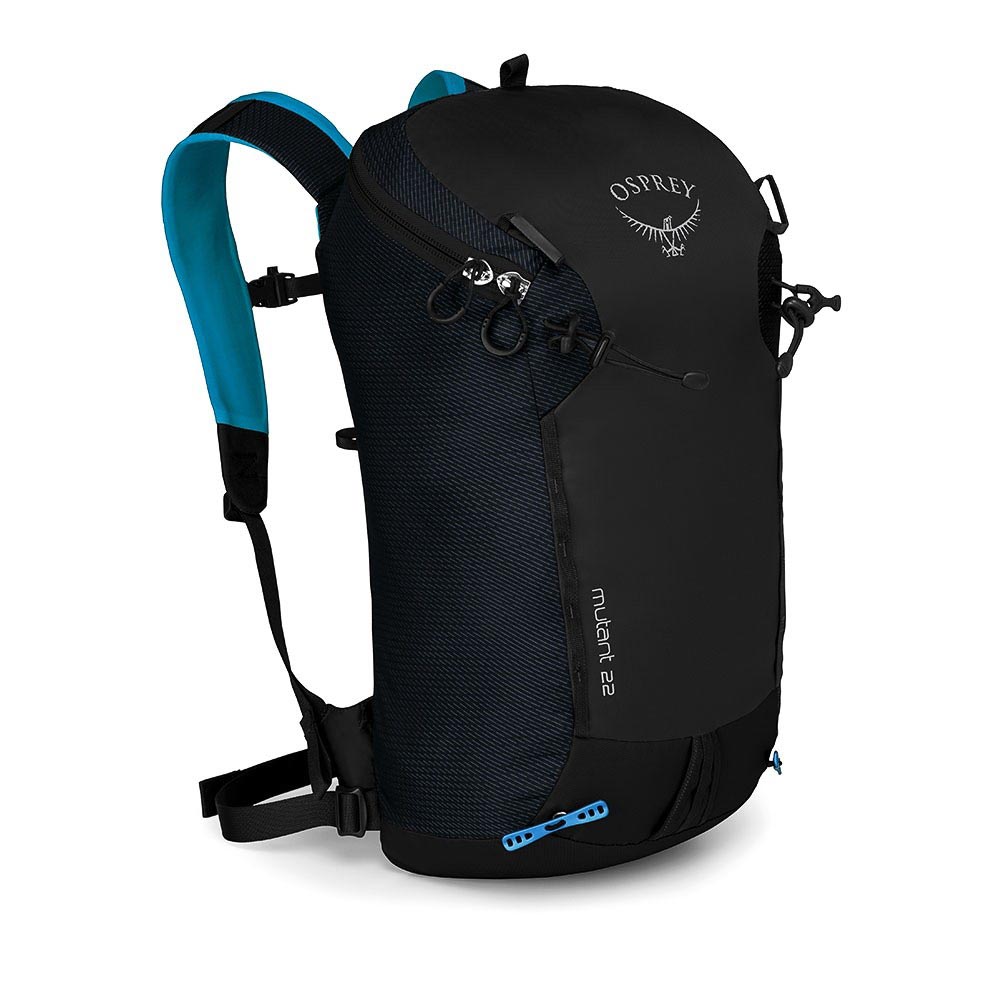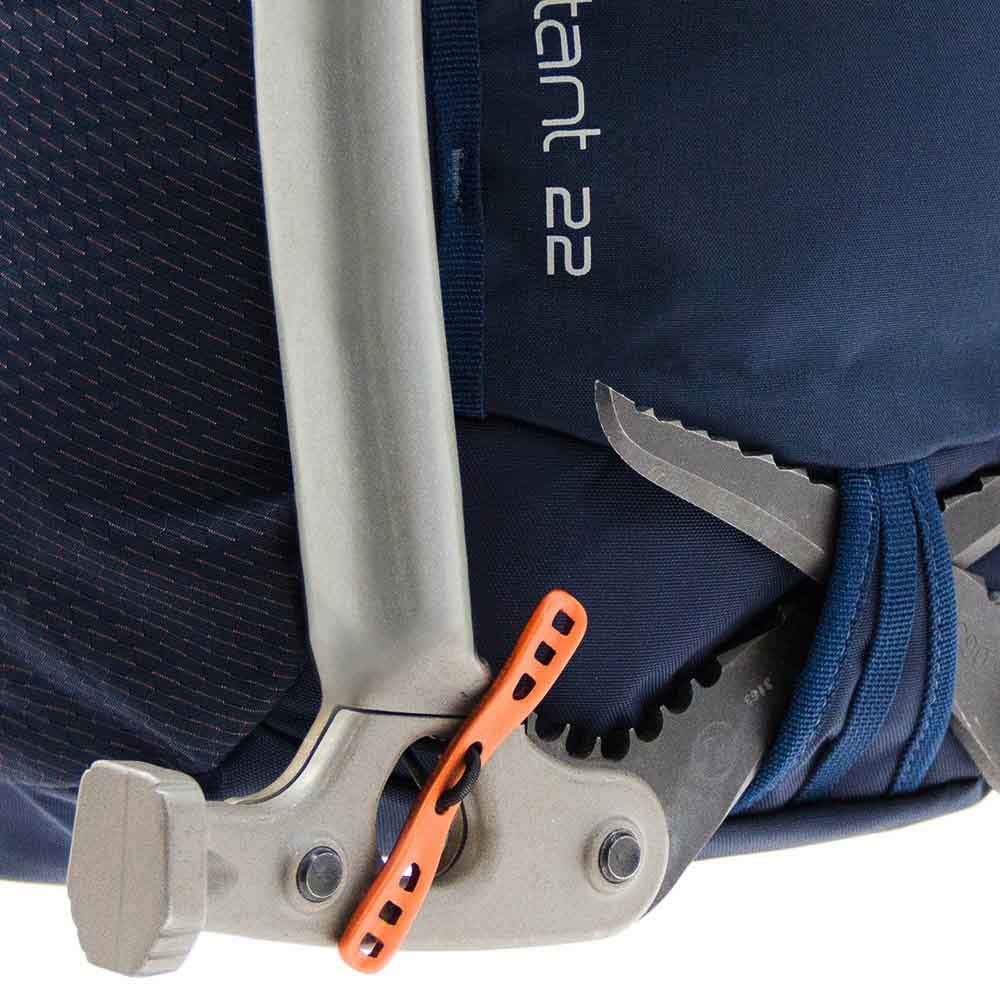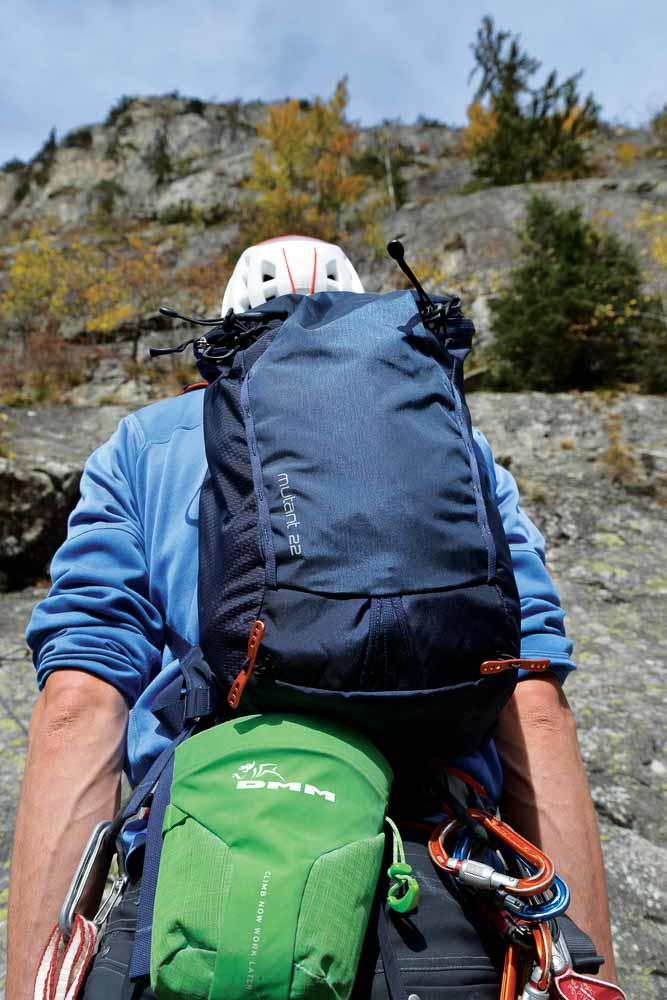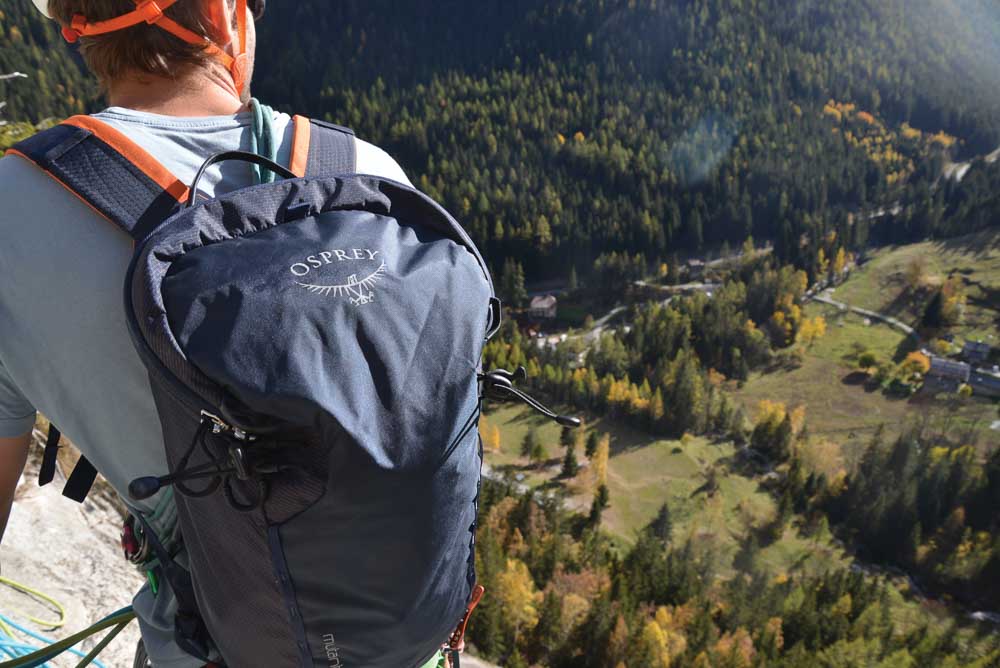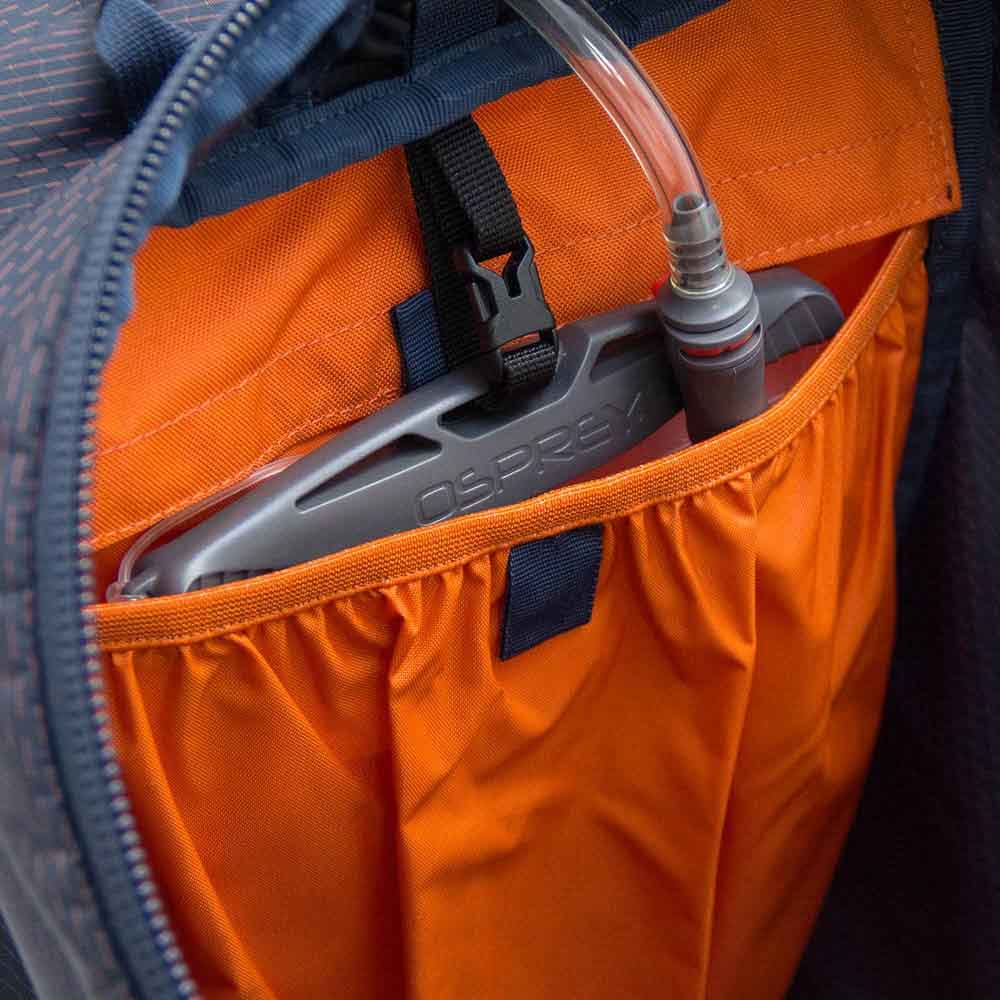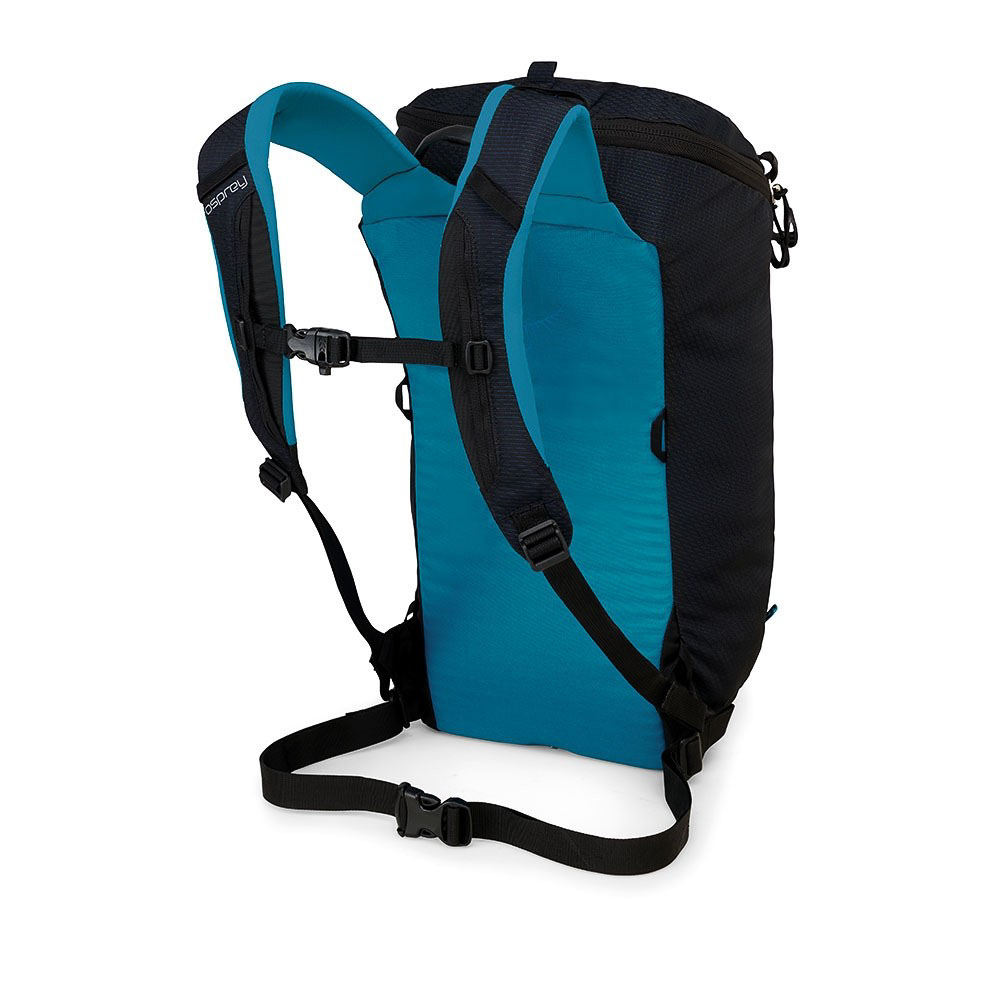Will Harris tries out the smallest model in the newly-revamped Mutant climbing pack range, but how does it compare with the competition?
Osprey have recently relaunched their Mutant range of technical climbing packs, which are aimed at climbers and mountaineers. Now in their fifth generation, the packs have been given a significant overhaul, with designs being tweaked and the latest materials being used to bring them up to date.
The range includes the Mutant 22 which we will look at in more detail below, as well as the larger 38L and 52L versions which we will be reviewing as part of a look at the complete range on the Trek & Mountain website over the coming weeks. Osprey have a reputation for building burly, well-built, long-lasting packs, and the new Mutant range lives up to these expectations. As a rule, their packs err on the side of comfort and function, choosing to add extra features which make the packs user-friendly, and using heavier-duty materials to build packs that last. This often means that their packs weigh more than the lightest on the market, but as always there is a trade-off between making the lightest product possible and creating something that is both good to use and durable.
At 22 litres the Mutant 22 sits alongside other similarly-sized sacks on the market, filling a niche for climbers who want a small rucksack in which to carry essentials on route. Spare layers, food, water, headtorch, first aid kit and guidebook can all fit comfortably into it, but this isn’t a pack for loading up with all of your gear for a day at the crag. On long approaches to mountain crags it’s not uncommon for climbers to carry one of their smaller bags inside the larger day sack, to then be carried by whichever climber is seconding on each pitch of the route. In the Alps, particularly on accessible day routes, climbers will often leave the lift already wearing their harnesses and helmets with ropes attached to the outside of their mini packs, meaning that only a small rucksack such as the Mutant 22 is needed.
Features
The Mutant 22 is a clean, simple design with one large main compartment closed by a zip-top flap. It has an Internal pocket attached to the inside of the front-folding flap, which is large enough to take a pair of sunglasses and a couple of bars, which includes a key toggle. Comfort-wise, the pack has a thick foam back panel which provides adequate padding when heavy or pointed gear is put inside. The shoulder straps are nicely padded, with more padding than other similar-sized packs on the market. In terms of fit, the one size available will fit most – but not all – climbers. During tests we found that for taller people it felt comfortable when climbing, but shorter climbers found that in order for the rucksack to be high enough on the back to not interfere with a chalk bag the shoulder straps pulled uncomfortably tight against the side of the climber’s neck. As always, try to test as much as possible in store before deciding if the fit is right for you.
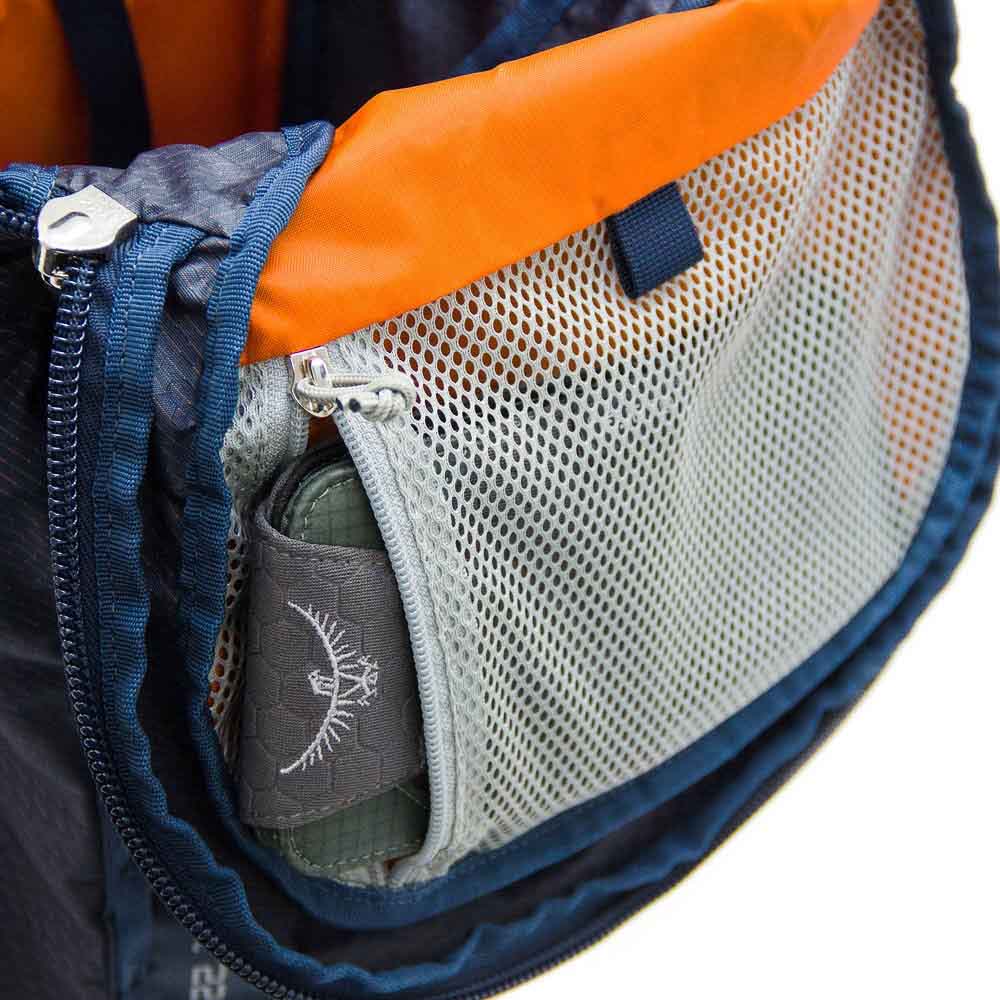 The pack has a well-functioning rope attachment strap which tucks away neatly inside the pack when not in use, poking out between the two zips which close the main compartment and hooking on to a small loop at the front of the sack. We found the hook on the end of the strap a bit fiddly to undo, but this does mean that the rope is securely attached. Ice axe attachment points for two tools, with a buckle on elastic to attach each handle and metal toggles on elastic to fit through the head of each tool, provide a tried-and-tested system for carrying axes which works well.
The pack has a well-functioning rope attachment strap which tucks away neatly inside the pack when not in use, poking out between the two zips which close the main compartment and hooking on to a small loop at the front of the sack. We found the hook on the end of the strap a bit fiddly to undo, but this does mean that the rope is securely attached. Ice axe attachment points for two tools, with a buckle on elastic to attach each handle and metal toggles on elastic to fit through the head of each tool, provide a tried-and-tested system for carrying axes which works well.
Weight vs durability
At £80 the Mutant is at the pricier end of the spectrum when compared to other similar-sized packs on the market, but Osprey tend to successfully compete on build quality and functionality rather than price. There are certainly lighter products on the market at this size, with 570g not being especially light, but lighter sacks adopt a more minimalist approach to both features and fabrics to significantly cut down weight. To illustrate weights, the Arc’teryx Alpha FL 30 weighs in at only 5g more than the Mutant 22, and this larger pack that is also comfortable to climb with is worth considering if more carrying space is needed, but with a £150 price tag this is significantly more expensive.
The Mutant 22 is best thought of as a scaled-down version of a bigger pack, using the same hard-wearing, heavy-duty fabrics with a longer-lasting feel than the lighter-weight alternatives. Perhaps the pack’s main competition comes from the Simond Cliff 20, a super light 275 gram rock-climbing focussed sack available from Decathlon for £14.99, which is incredibly popular with climbers throughout Europe. Whilst heavier and much more expensive, the Mutant’s burlier build means that it will last longer, and its more functional internal pocket and ice axe holders mean that it will be more user friendly in an alpine environment.


